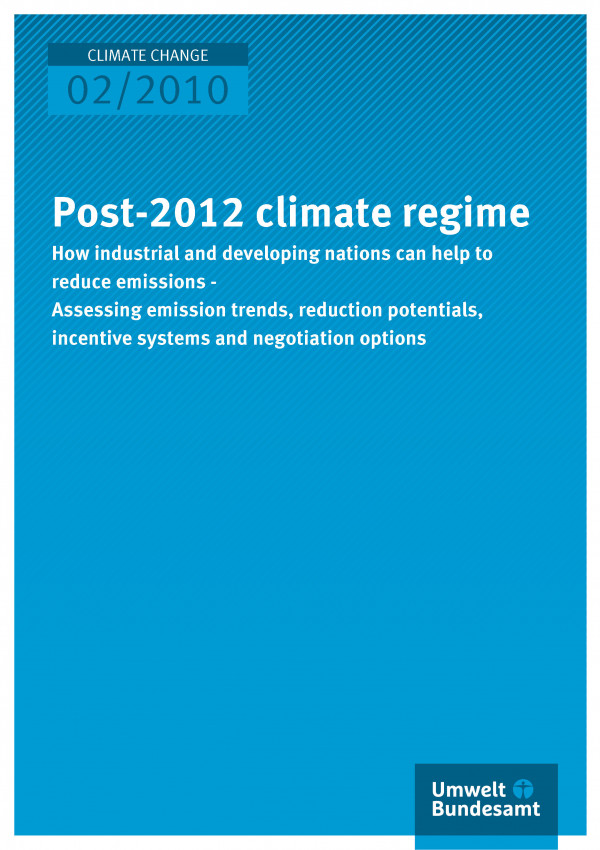According to the IPCC fourth assessment report (2007), global carbon dioxide emis-sions need to be reduced by at least 50 to 85% in 2050 compared to 2000 levels if the increase in global surface temperature is to be limited to 2°C compared to pre-industrial levels. The IPCC also suggests intermediate greenhouse gas emission targets for 2020, including a range of 25% to 40% emission reductions compared to 1990 for the group of Annex I countries and a ‘substantial deviation from baseline in Latin America, Middle East, East Asia and Centrally-planned Asia’ (IPCC 2007, p. 776). For develop-ing countries, a reduction range of 15 to 30% below baseline has been suggested (den Elzen and Höhne 2008).

Klima | Energie
Post-2012 climate regime
How industrial and developing nations can help to reduce emissions -
Assessing emission trends, reduction potentials, incentive systems and negotiation optionsReihe
Climate Change | 02/2010
Seitenzahl
62
Erscheinungsjahr
Autor(en)
Vicki Duscha, Jakob Graichen, Sean Healy, Joachim Schleich, Katja Schumacher
Sprache
Englisch
Forschungskennzahl
3707 41 103
Verlag
Umweltbundesamt
Dateigröße
2918 KB
Preis
0,00 €
Druckversion
nicht lieferbar
Als hilfreich bewertet
264




